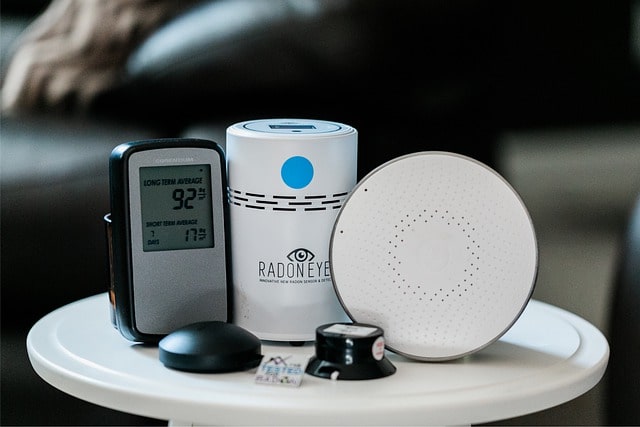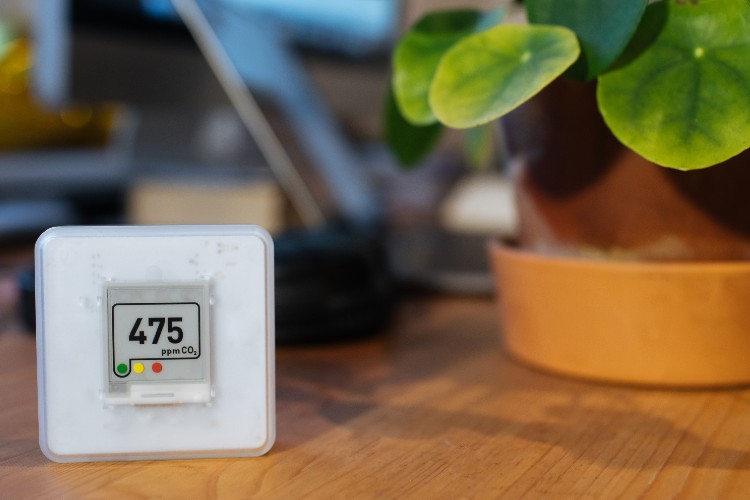Unfortunately, air pollutants are everywhere. From mold to allergens to volatile organic compounds (VOCs) and more, these substances are all around us, even in our homes, where they can make us sick and even be life-threatening, either in the short term or with long-term exposure.
To prevent this, you may need to test the air quality in your home.

Who Should Test the Air Quality in Their Home
There isn’t a single test that will look for all air pollutants, so for a thorough air quality examination, you’ll need to do multiple tests for different substances. However, you may not need or want to test for all these pollutants. If there’s a particular one you’re worried about, you don’t need to test for all the others. On the other hand, if you’re having medical symptoms that have you questioning the air quality inside your home, you may want to do more tests for different substances. Of course, you should also see a doctor for any symptoms you’re experiencing. They can help you treat the symptoms, narrow down the cause and determine whether it’s something in the air or not.
Many people also want to test the air quality of a home before they buy. However, your home inspector should be testing the air quality as part of the inspection, so testing yourself shouldn’t be necessary. Be sure to look for the results of the test in the home inspection report.
What You Might Need
- Indoor Air Quality Monitor
- Carbon Monoxide Detector
- Mold Test
- Batteries as necessary for the detectors and tests
- Installation tools and hardware as indicated by detectors and tests
Indoor Air Quality Monitor
At the very least, it’s a good idea to use an indoor air quality monitor. These are also good if you don’t have a specific concern about the air quality inside your home, but want to stay on top of things just in case. Air quality monitors can keep track of multiple air quality issues at once, including temperature, humidity, mold, radon, carbon monoxide, particulate matter, pollen, and VOCs. However, not all indoor air quality monitors keep track of all of these issues.
The Airthings 4200 House Kit monitors air temperature, humidity, mold, radon, and VOCs across multiple rooms, and can even connect with your smart home for easier control. For even more complete air quality coverage, you can also add any combination of Airthings Air Pollution Monitor, which monitors particulate matter. However, you’ll still need a separate carbon monoxide detector, which brings us to our next section…
Carbon Monoxide Detector
Carbon monoxide is an odorless, colorless gas that can starve your heart and brain of oxygen. As such, everyone needs a carbon monoxide detector, and you should think of it as being as essential as a smoke detector.
Carbon monoxide is totally undetectable by sight or scent and can cause you to lose consciousness within a couple of hours. The short-term symptoms of carbon monoxide poisoning are very easy to mistake for other illnesses and can impair your judgment, making it easy to believe something else is causing the problem. It’s especially dangerous if the exposure happens while you’re sleeping, as you may not wake up to realize that there’s a problem at all.
As if that’s not enough, long-term, low-level exposure may not make you noticeably sick, but can still cause severe neurological and respiratory symptoms.
Fortunately, carbon monoxide detectors provide an easy, convenient solution and are very affordable. Look for one that’s battery-powered or with a battery backup, so it can still work even if the power is out in your home. A couple of our favorites are the First Alert CO710 Carbon Monoxide Detector and Kidde Carbon Monoxide Detector. For the most convenience, you might want to opt for a two-in-one smoke and carbon monoxide detector. First Alert and Kidde both make combo models as well.
It’s generally a good idea to have a couple around the home, plus one in both the garage and kitchen, since these are places where carbon monoxide is more likely to appear.
Mold Test
Finally, you’ll want to do a mold test, especially if you know that you or someone else in your household has a mold allergy.
There are all kinds of mold tests available, some of which must be sent to a lab. There are also swab tests that can give you results at home in a few minutes. Lab tests may take a few weeks to give results, but they’re also more accurate. Our favorite lab mold test is the Mold Inspection Network DIY Mold Test, while we like the Seeml Labs DIY Mold 3 Test Kit for faster results.
Whichever test you go with, use it in the area you suspect mold or, for a general test, near your home’s ventilation system.
What’s Next?

If your tests don’t uncover anything, but you still think there’s an air quality problem, it may be time to call in a professional. The Indoor Air Quality Association keeps a list of indoor air quality professionals that makes it easy to find one near you.
However, if you do discover air pollutants in your home, you’ll need to take action and prevent recurring issues.
Make sure you keep your carbon monoxide detector in top form. Change the batteries in it every six months, just like you do with your smoke detector. If you ever suspect carbon monoxide in an area, evacuate immediately and then call emergency services. If you suspect a gas leak, you’ll also want to call your natural gas company.
You’ll also need to make sure your air conditioner is operating optimally and providing the best airflow in your house. Get it serviced if necessary. If you still have problems with airflow inside, using fans and opening windows every now and then will help air out your home and allow air to better circulate inside.
Using air purifiers with an HEPA filter, charcoal filters, and even ultraviolet lighting can help effectively remove VOCs, mold spores, bacteria, viruses, smoke, allergens, and more. For mold that’s already growing, you can kill it with dish soap, diluted white vinegar, borax, or a specially made mold killer. Lastly, if you struggle with mold due to excess humidity, adding dehumidifiers where mold is a problem can be a big help.


